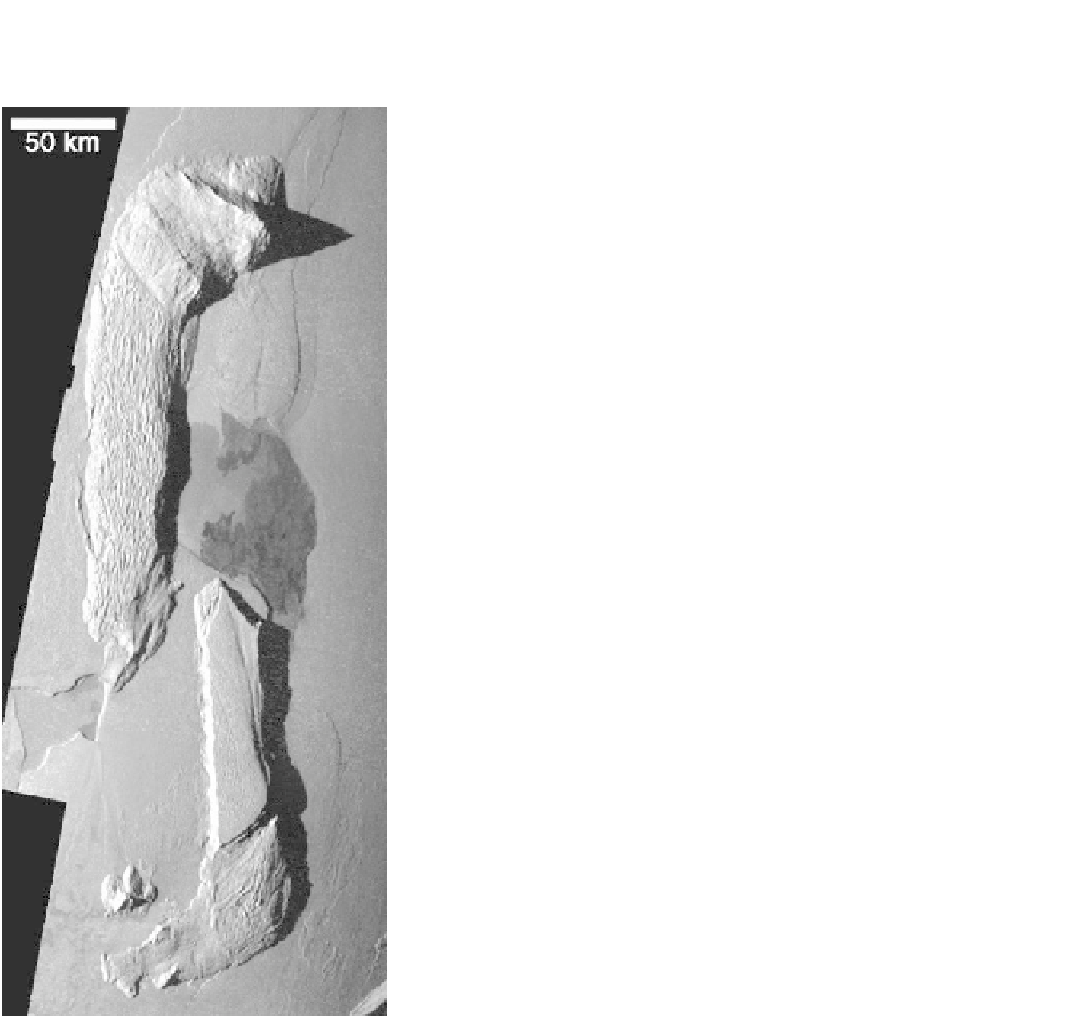Geology Reference
In-Depth Information
Figure 8.14. An oblique Galileo view of a mesa near the Tvashtar
volcano, Io; the irregular margin of the mesa probably resulted from
sapping processes associated with the removal of sulfur dioxide
(NASA Galileo PIA02519).
of sulfur-rich materials. Volcanic resurfacing on Io is so
rapid that impact craters are not preserved. Io
'
s mountains
are among the highest in the Solar System and most appear
to be uplifted fault blocks, some of which have been offset
by strike
slip faults. Gradation is suggested by the mass
wasting seen in a few areas and sapping processes associ-
ated with SO
2
.
-
8.5 Europa
In many respects, Europa
(Fig. 8.15)
is unique in the Solar
System. Slightly smaller than Earth
'
is Moon, it is mostly a
rocky object but has an outer shell of water some 130 km
thick, the surface of which is frozen
(Fig. 8.4)
. The thick-
ness of the ice layer above the ocean is unknown but
estimates range from very thin (i.e., a few kilometers) to
very thick, in which the entire mass is frozen nearly all the
way to the rocky mantle. In any case, the total amount of
water (liquid and frozen) is more than
five times the
amount of all of Earth
Figure 8.13. A mosaic of Galileo images showing two Io mountain
ranges, north Hi
'
iaka Mons (upper left) and south Hi
'
iaka Mons, that
could have been offset by strike
slip faulting; the two blocks appear
to
fit back together geometrically (NASA Galileo PIA02540).
-
s water.
The
first clear spacecraft views of Europa were pro-
vided by the Voyager spacecraft in 1979. These images,
however, were rather low-resolution, returning pictures
that, at best, are about 2 km per pixel. Nonetheless, even
these low-resolution views provided tantalizing hints that
Europa is an interesting object. Seen in global views,
Europa gives the appearance of a string-wrapped baseball
without its cover. Many of the
“
strings
”
are actually ridges
and fractures, suggesting that some tectonic process has
cracked the icy crust
(Fig. 8.16)
.
The Galileo orbiter imaged substantial parts of Europa,
some in resolutions as high as 7m per pixel for tiny areas.
Geologic analysis shows a prevalence of bright plains that
'
patches of SO
2
. The release of SO
2
wouldleadtounder-
cutting and erosion, leaving irregular scarps and mass-
wasted debris
(Fig. 8.14)
. These processes would continue
until the source of the SO
2
was depleted locally.
8.4.5 Io summary
The surface of Io is dominated by volcanism resulting from
tidal stressing generated by interactions with Jupiter and
Europa. Most of the volcanism involves silicate composi-
tions, including high-temperature eruptions, and explosions




